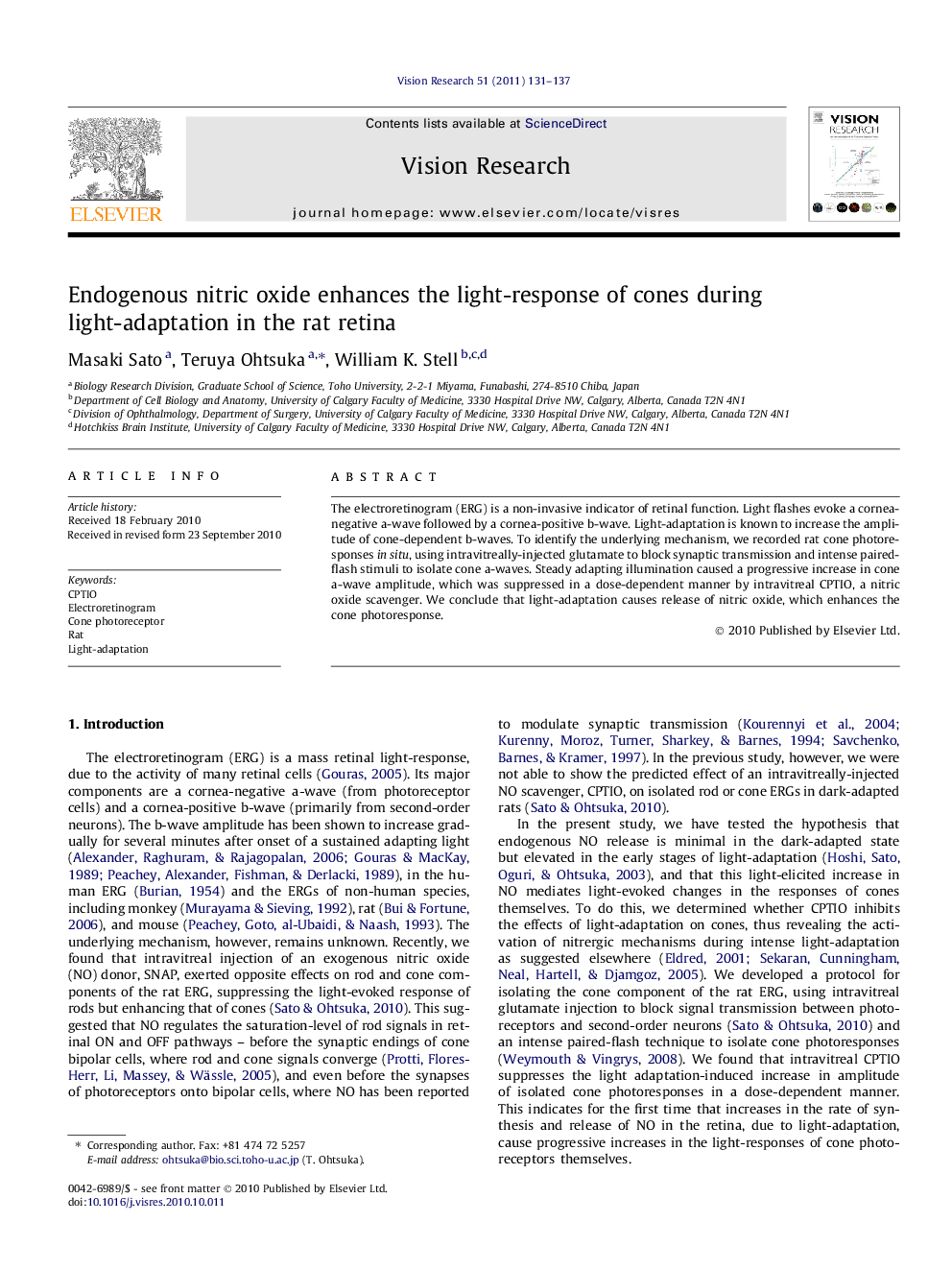| Article ID | Journal | Published Year | Pages | File Type |
|---|---|---|---|---|
| 4034347 | Vision Research | 2011 | 7 Pages |
The electroretinogram (ERG) is a non-invasive indicator of retinal function. Light flashes evoke a cornea-negative a-wave followed by a cornea-positive b-wave. Light-adaptation is known to increase the amplitude of cone-dependent b-waves. To identify the underlying mechanism, we recorded rat cone photoresponses in situ, using intravitreally-injected glutamate to block synaptic transmission and intense paired-flash stimuli to isolate cone a-waves. Steady adapting illumination caused a progressive increase in cone a-wave amplitude, which was suppressed in a dose-dependent manner by intravitreal CPTIO, a nitric oxide scavenger. We conclude that light-adaptation causes release of nitric oxide, which enhances the cone photoresponse.
Research highlights► Electroretinograms (ERGs) were recorded from intact eyes of living rats in situ. ► Intravitreal glutamate and double-flash stimuli produced pure-cone ERG a-waves, indicating cone photoresponses. ► Strong background adapting light caused a progressive increase in cone a-wave amplitude. ► This increase was suppressed in a dose-dependent manner by intravitreal CPTIO, a nitric oxide scavenger. ► Thus light-adaptation causes release of nitric oxide, which enhances the cone photoresponse.
